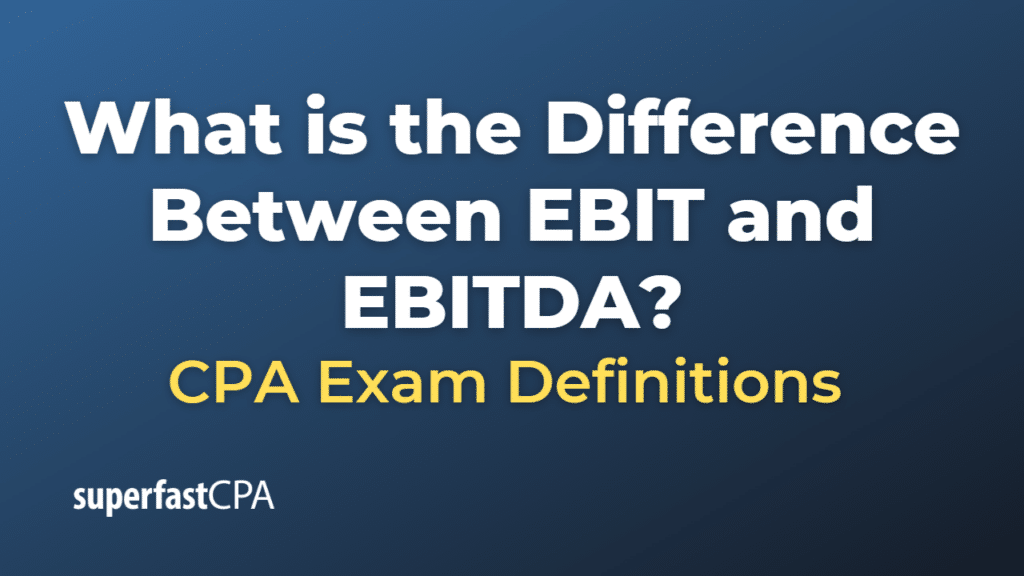Difference Between EBIT and EBITDA
EBIT and EBITDA are both financial metrics used to evaluate a company’s profitability and operating performance. However, they differ in terms of what costs they include and exclude.
- EBIT stands for “Earnings Before Interest and Taxes”. This measure reflects a company’s operating performance by showing the earnings generated from its core business operations, excluding the effects of interest expense (which is related to the company’s financing decisions) and income tax expense (which is influenced by the company’s tax environment). EBIT is also often referred to as “operating income” or “operating profit.
- EBITDA stands for “Earnings Before Interest, Taxes, Depreciation, and Amortization”. This measure builds on EBIT by also excluding depreciation and amortization. Depreciation and amortization are non-cash expenses that represent the gradual wear and tear of physical assets and the usage of intangible assets, respectively. By excluding these expenses, EBITDA provides a clearer view of a company’s cash operational profitability.
The main difference between the two is that EBIT includes depreciation and amortization expenses, while EBITDA excludes them. Both measures are useful, but they serve slightly different purposes. EBIT provides a clear view of the company’s profitability from its operations, while EBITDA can provide a better sense of the company’s operational cash flow, especially for industries with significant investments in long-term assets that incur large depreciation or amortization expenses.
Example of the Difference Between EBIT and EBITDA
Let’s take an example of a hypothetical company, “TechCo,” and its financial results to illustrate these terms.
Let’s assume the following financial figures for TechCo:
- Total Revenue (Sales): $1,000,000
- Cost of Goods Sold (COGS): $400,000
- Operating Expenses (including depreciation and amortization): $300,000, where depreciation and amortization account for $50,000
- Interest Expenses: $50,000
- Taxes: $100,000
Operating Profit (EBIT): This would be calculated as Total Revenue minus COGS and operating expenses (excluding interest and taxes). So, $1,000,000 – $400,000 – $300,000 = $300,000. This is TechCo’s operating profit, reflecting the earnings generated from its core business operations.
EBITDA: This would be calculated as EBIT plus Depreciation and Amortization. So, $300,000 + $50,000 = $350,000. This measure gives a clearer picture of TechCo’s operational cash profitability by excluding non-cash expenses (depreciation and amortization).
The example shows how EBIT and EBITDA are calculated and how they provide different perspectives on a company’s profitability and cash flow generation.













